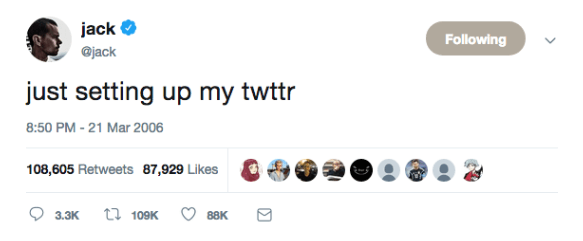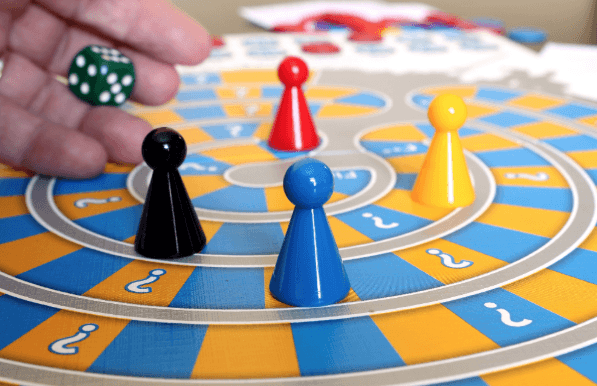Campaigns » It’s their playground
Facebook wasn’t created to be the world’s biggest social network. At its birth ‘social media’ wasn’t really even a thing. It was outsiders which dubbed these kinds of websites ‘social media’. Facebook (or ‘The facebook’ as it was) just wanted to be a place for people to add their profiles and spy on people you might have once seen across a hallway.
Twitter, back in its twttr days, was just a nice place for you to send a text message out to the world, and people could choose to follow your SMS-friendly updates if they wanted.

YouTube was a way for people to upload their own videos and share it with other people on the internet. Instagram just wanted to make your pictures look nice with some filters and frames. LinkedIn, Tumblr, Whatsapp, Snapchat, all had a simple reason to exist.
These are simple acorns that have grown into multi-branched oaks. Over time, these and many other networks like them became what the consumers actually demanded. They give users what they want to see, making people want to spend time on them and be the users’ first choice of network. They tacked on more extras. Direct messages. Hashtags. Blocking/muting. Now polls, Stories and of course funny face filters and even face swaps.

During all this, the networks needed to find a way to monetise their platforms and keep people using them. This meant the ‘free’ ones listed above survived, whereas pay-to-use networks died off. How many pay-to-use networks can you name? Take a second to think about it.
Maybe a few niche ones like Strava or Spotify which people don’t mind paying for, as they see extra value in what they’re given for the money – but they still have a free version to tempt you in.
People now demand their free app/website to be amazing. If it isn’t, they’ll go elsewhere. For that reason, despite advertisers being able to interrupt a user’s experience, the networks want to be careful not to annoy their users.
Hence the existence of algorithms.
People reluctantly accepted the idea of an interest-based timeline/News Feed on the basis they’d see more of what they like, and less of what they didn’t. That and the fact the networks didn’t give them a choice, really…
And, despite a lot of moaning about people no longer being able to see their whole timeline or News Feed in date order, it has generally worked. The algorithms learn what people like to see and (with a few manual caveats in there from the network overlords) they’re pretty good at showing you the stuff you’ll find interesting first.
An advertiser can still get a helping hand into that News Feed by paying, of course, but just throwing money at a post or campaign won’t guarantee it gets seen by as many eyes as you want. Your post has to still be relevant to the audience you choose, or the algorithm will simply decide not to show it very much – and you get fewer views for your buck.

The networks are open about that, take Facebook and Instagram for example. They’ll quite happily tell you how relevant your advertised post is on a scale of 1-10 whilst the campaign is running, and that often reflects in the number of people it will show. Indeed when you decide to boost a post, it’ll give a very broad range of potential audience sizes for your ££s, and doesn’t make any guarantees because it’s not quite sure how well it’ll be received yet.
Social media managers actually like this. It challenges us to aim for the higher number. To maximise our money. Or your money. Simply handing over £20 and guaranteeing 5000 views is no fun at all, but say we could get somewhere between 3,000 and 10,000 for the £20 boost, and we’re visualising some celebratory 5-figured confetti on our desks.
To make sure you’re hitting the higher relevancy scores and therefore maximising the total reach for your boost budget, you need to add posts that the algorithm will think are super awesome and want to show the world.
You have to play by its rules, though. Avoiding gambling, violence, nudity, self harm etc all goes without saying, because although early algorithms quickly realised this is what users actually engaged with more, it’s not in the networks’ interest to be plugging such ideas (hence the aforementioned caveats, which tell the algorithm to ignore the more, ahem, ‘private’ parts of human nature and curiosity behind a covered webcam).
The thing with the algorithms is that nobody knows all of its rules. If they published a list of what the algorithms like, we’d simply produce things which tick every box. In the same way that getting onto page one of a search engine is a skill (with lots of third parties trying to figure out what gets you there) so there is a huge mystery to each algorithm’s decision making.

Especially as the algorithms are far more complex than you might ever imagine. We know it takes into account the timing of the posts, how many people interact with it, the quality of it etc – but there are hundreds of thousands of variables considered by Facebook’s algorithm. No person or team of people could conceivably write such an algorithm, and so we tend to conclude that the algorithm uses machine learning – finding variables we might not even consider – finding trends in behaviours, timings, all kinds of things. It’d probably be complete nonsense to any human, anyway, as it’ll simply be code. As always, though, its human masters need to step in and rein it in on a few things, like engagement baiting and the aforementioned vices that humans struggle to ignore.
Let’s take this back a few years – as soon as some savvy users noticed the algorithm favoured posts with images, they stuck images in. And then it favoured videos, so they put videos in. And then it favoured videos which people watch to the end, so suddenly there were loads of videos just a few seconds long. Then, quite recently, we saw seemingly simple images turned into short videos with slight movement in the background. And, currently, we see images split over two parts with one a static image and the other a video clip.
It’s a mess. But it’s all reacting to the algorithm’s preferences and so gets seen by more people. And when people then interact (even if just to say ‘why is this image split?’) the algorithm thinks it’s all good. In time, either the machine learning will notice people no longer like that setup, or Facebook’s algorithm-tamers will manually add another rule into the algorithm.
At a recent Session in London, I advised people to stop wasting time trying to do these strange algorithm-pleasing posts and instead give out content that people will simply enjoy. Don’t fight against the algorithm or try to trip it up or outfox it. Work with it, and remember what the network wants – it wants people to enjoy it.

An experienced marketer in the audience then asked me why they should not try to use these tricks to manipulate the algorithm’s preferences when they will get more engagement.
My response was simply ‘effort’.
Why spend your time creating ugly but algorithm-pleasing posts which get a short burst of engagement, but when the algorithm changes they’re left looking awkward and unpleasant? Instead of spending so much effort figuring out what the algorithm’s rules will show – simply use your time and effort to create content and posts that are naturally engaging and interesting to the network’s users.
In the long term, your Page will look much nicer and, more importantly, your Page will have been working with the networks and its rules, not trying to pedantically find loopholes to get a bit of an advantage. And they’ll like you for it.
If you were playing a game at someone’s house and could exploit the rules to win, would you? Especially if you knew that person would know you’d bent the rules and had not simply played the game in the spirit it was intended? You’d win the game – but would you get invited round again and again? Maybe not.

My advice is that you don’t try to trick the networks and outfox their algorithms. Work with them, helping them get their ultimate goal – to be a nice place for users to spend time – and when they react to stop unsavoury practices, you’ll still be as popular as always.
It’s their playground. Play nice.



© 2022 Maze Media Ltd • All Rights Reserved